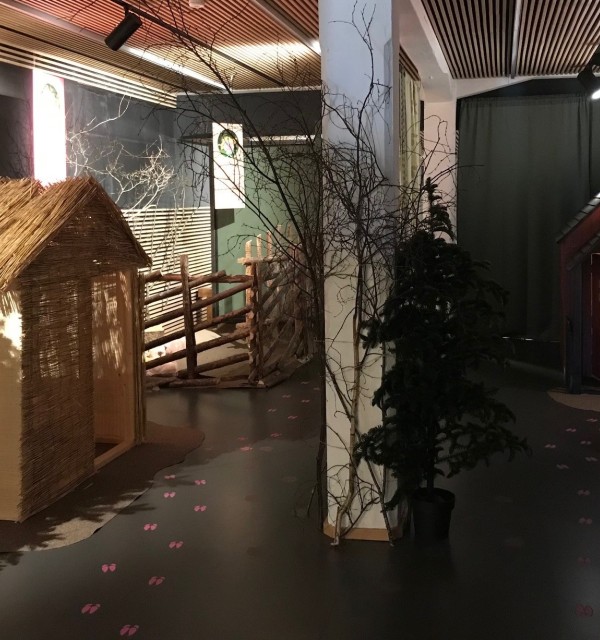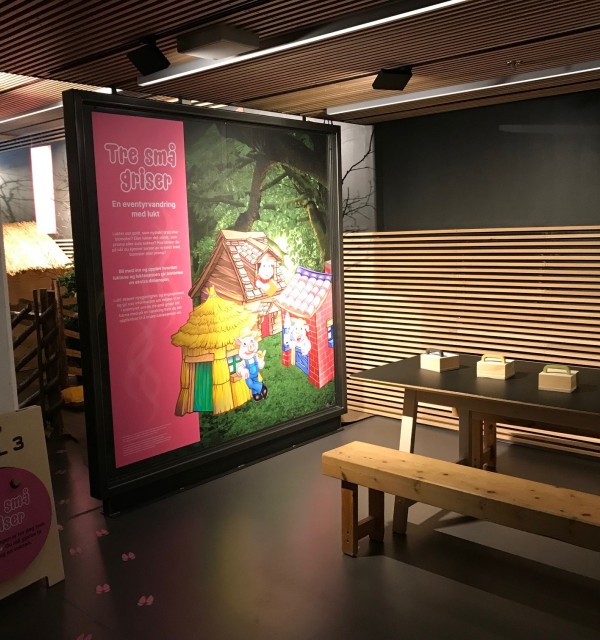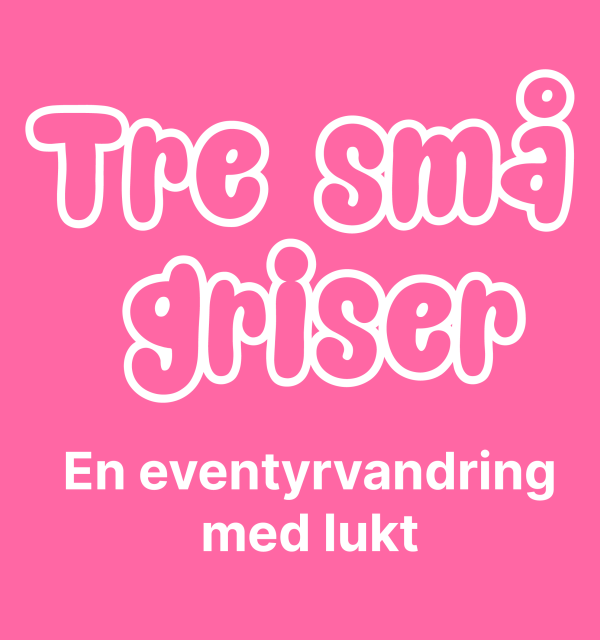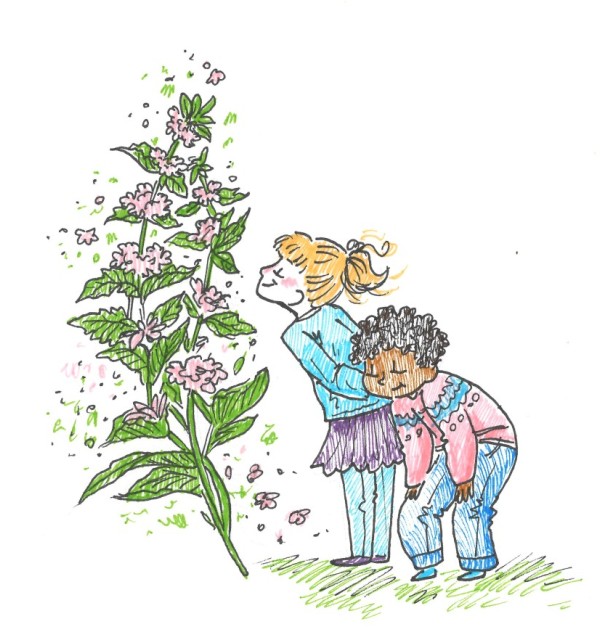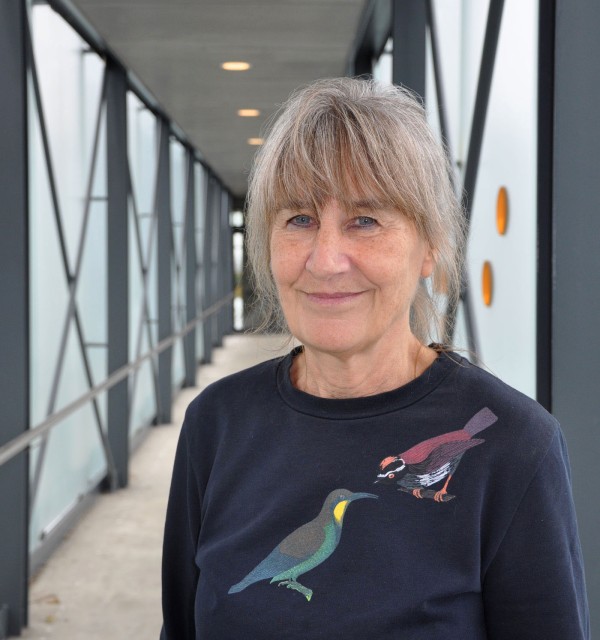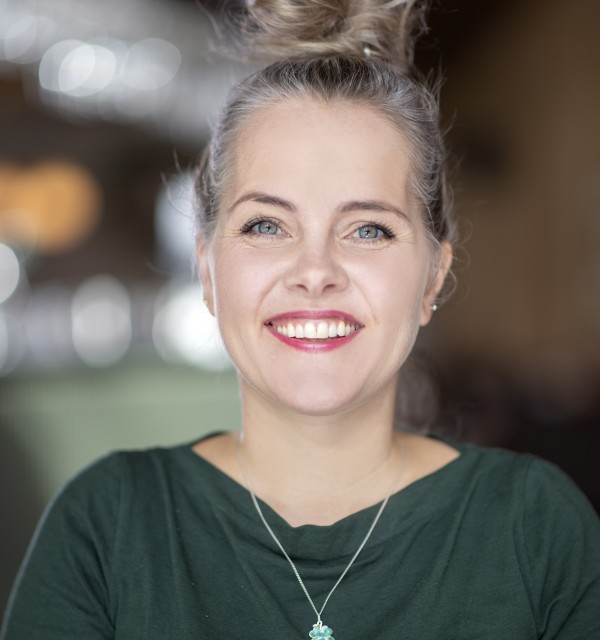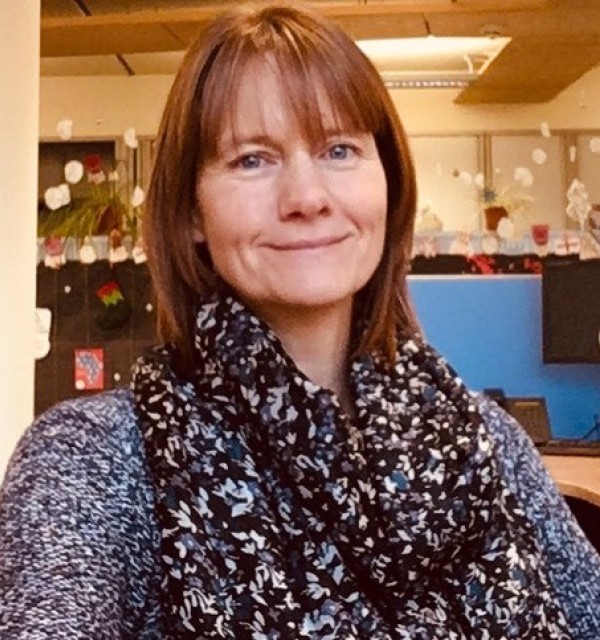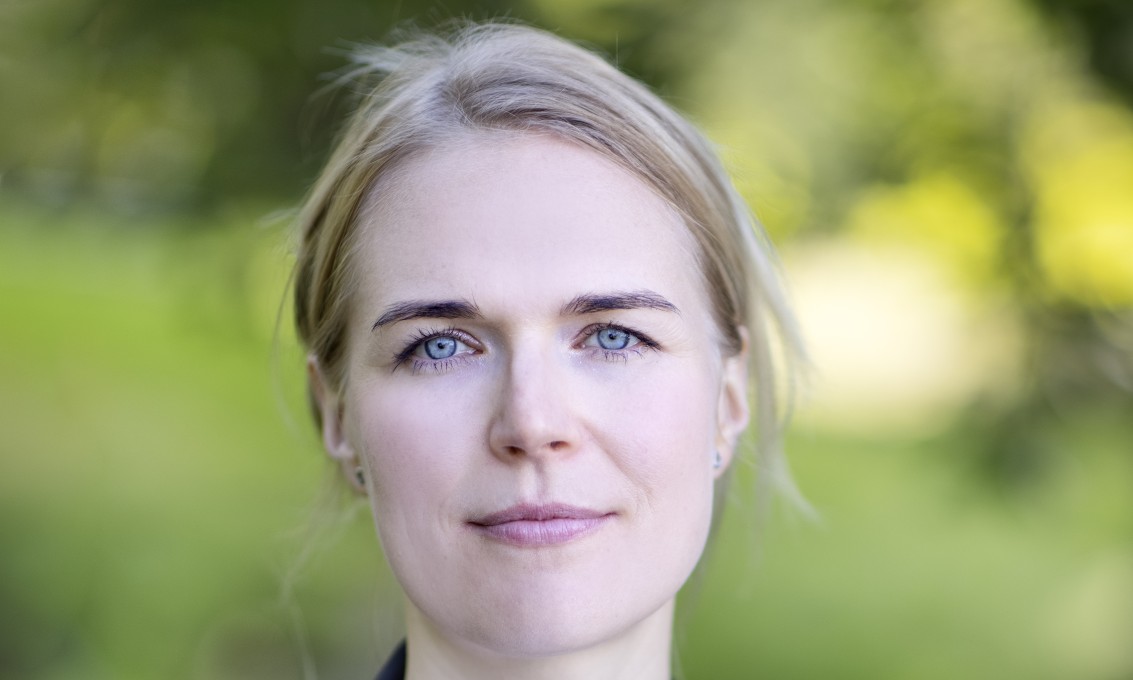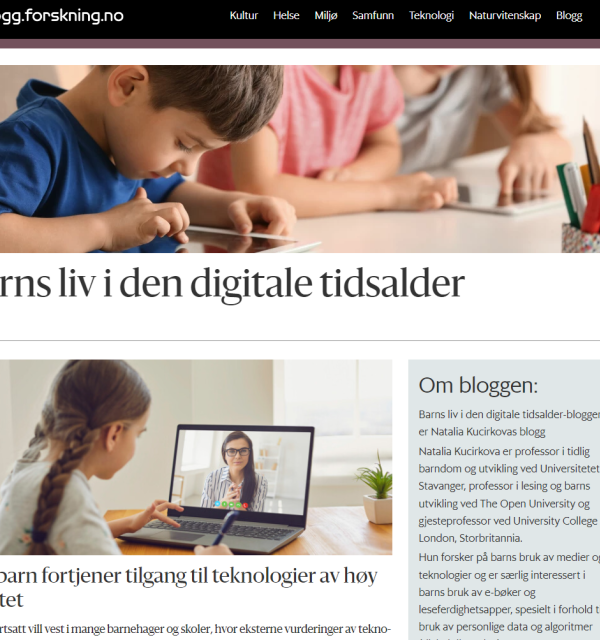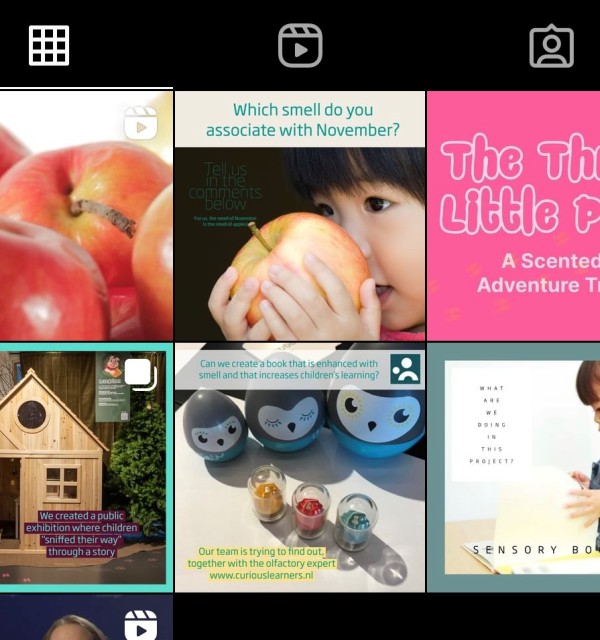Utdanningssystemet baserer seg stor grad på audiovisuelt (lyd og bilde) innhold. Duft gir unik informasjon om miljøet, skaper nysgjerrighet, engasjement og aktiverer minner. Dette prosjektet utforsker hvordan duftinntrykk påvirker barns digitale lesing.
Studien skal gi et teoretisk forankret perspektiv på barns sansemessige lesing.
Barnehageansatte og foreldre til barn i alderen 3-5 år.
2021-2025
Om prosjektet
Til tross for duftens rolle i kognisjonen og at duft gir unik informasjon om miljøet, skaper nysgjerrighet, engasjement og aktiverer minner, forsømmes den i barns læring. Dette er det første prosjektet som undersøker den pedagogiske verdien av lukt - olfaksjon - i barns læring, da særlig innen lesing.
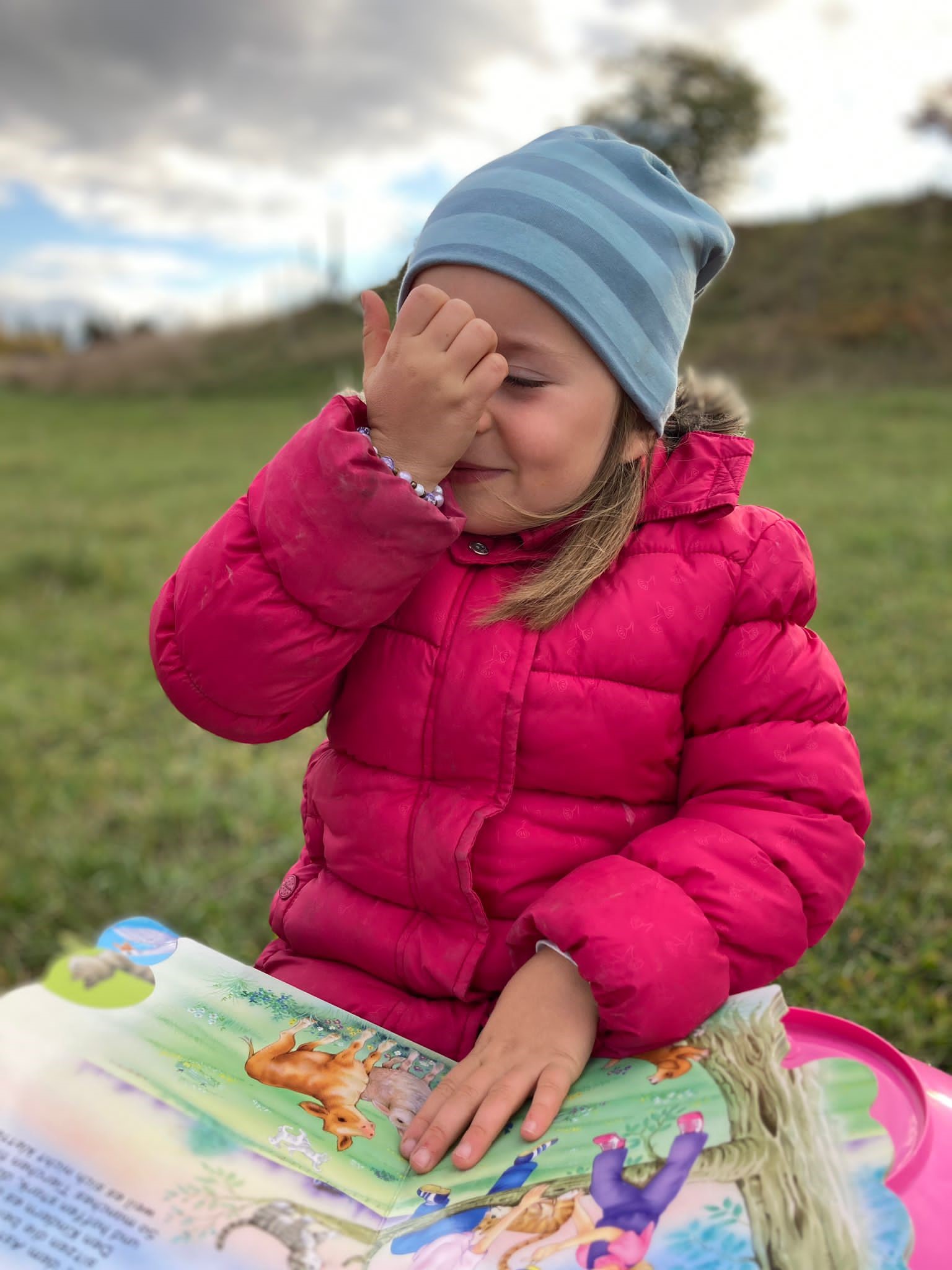
Dette tverrfaglige prosjektet ser nærmere på digitale bøker lest av barn i barnehagealder. Prosjektet involverer foreldre, lærere og designere for å undersøke skjæringspunktet mellom teknologi og den naturlige opplevelsen av sensorisk engasjement med historier. Effekten av multisensorisk lesing - med et spesielt søkelys mot lukt som en sentral, sensorisk stimulering - skal undersøkes med hensyn til økning i barns leseengasjement, forståelse og læring av historierelatert ordforråd.
Hovedstudien skal utføres i Norge, et av landene i verden med best internettdekning, teknologitilgjengelighet og digital kompetanse i utdanningssektoren. Datainnsamlingen følger en deltakende forskningsmetodikk, noe som betyr at forskerne involverer barn som medforskere. Sammen med foreldrene og lærerne undersøkes lukt og luktens rolle i barnas digitale bøker.
Barns luktesans undersøkes med hovedfokus på digitale bøker. Digitale bøker er viktige for barns læring, og godt utformede digitale bøker gir betydelige læringsfordeler for barn med spesielle læringsbehov og barn som ikke er vant til å lese hjemme. Mange barn, spesielt de som kan sies å være såkalte motvillige lesere, foretrekker å lese digitalt, noe som påvirker deres egen motivasjon til å lese. I motsetning til trykte tekster, kan digitale tekster deles og endres dynamisk i leseprosessen og tilpasses leseren.
Prosjektets oppmerksomhet rettes mot tre til fem år gamle norske barn, deres barnehager og familier som vil finne ut om duftende bøker øker barns engasjement, forståelse og begrepslæring. I tillegg vil barnebok forfattere og illustratører, app-designere, forleggere og bibliotekarer bidra til utviklingen av prototyper og ideer.
Nasjonal spørreundersøkelse
Som del av prosjektet har det blitt utført en undersøkelse med mål å etablere norske foreldres og barnehagelæreres holdninger til forbindelsen mellom barns historielesing og sensorisk engasjement med e-bøker.

Undersøkelsen produserer en omfattende kartlegging av bruken av e-bøker i norske familier, samt synspunktene til foreldre og lærere om hvordan sansene påvirker lesing.
Spørreundersøkelsen inngår som en sentral del av to store, norske forskingsprosjekt; SPrELL og Sensory reading. SPrELL-prosjektet omhandler språklæring hos flerspråklige barn og lesing av digitale tekster på flere språk, mens Sensory reading prosjektet undersøker den pedagogiske verdien av sanser i barns læring, da særlig innen lesing.
Her kan du lese mer om funnene av undersøkelsen:
Shared book reading: a Norwegian survey of reading practices in families
En god sofakrok kan faktisk føre til mer høytlesing (forskning.no)
Beskrivelse av utstillingen Tre små griser - en eventyrvandring med lukt
De tre små griser - en eventyrvandring som vekker barns nysgjerrighet med lukter og dufter. Utstillingen holder åpnet på Vitenfabrikken helt frem til jul 2022.
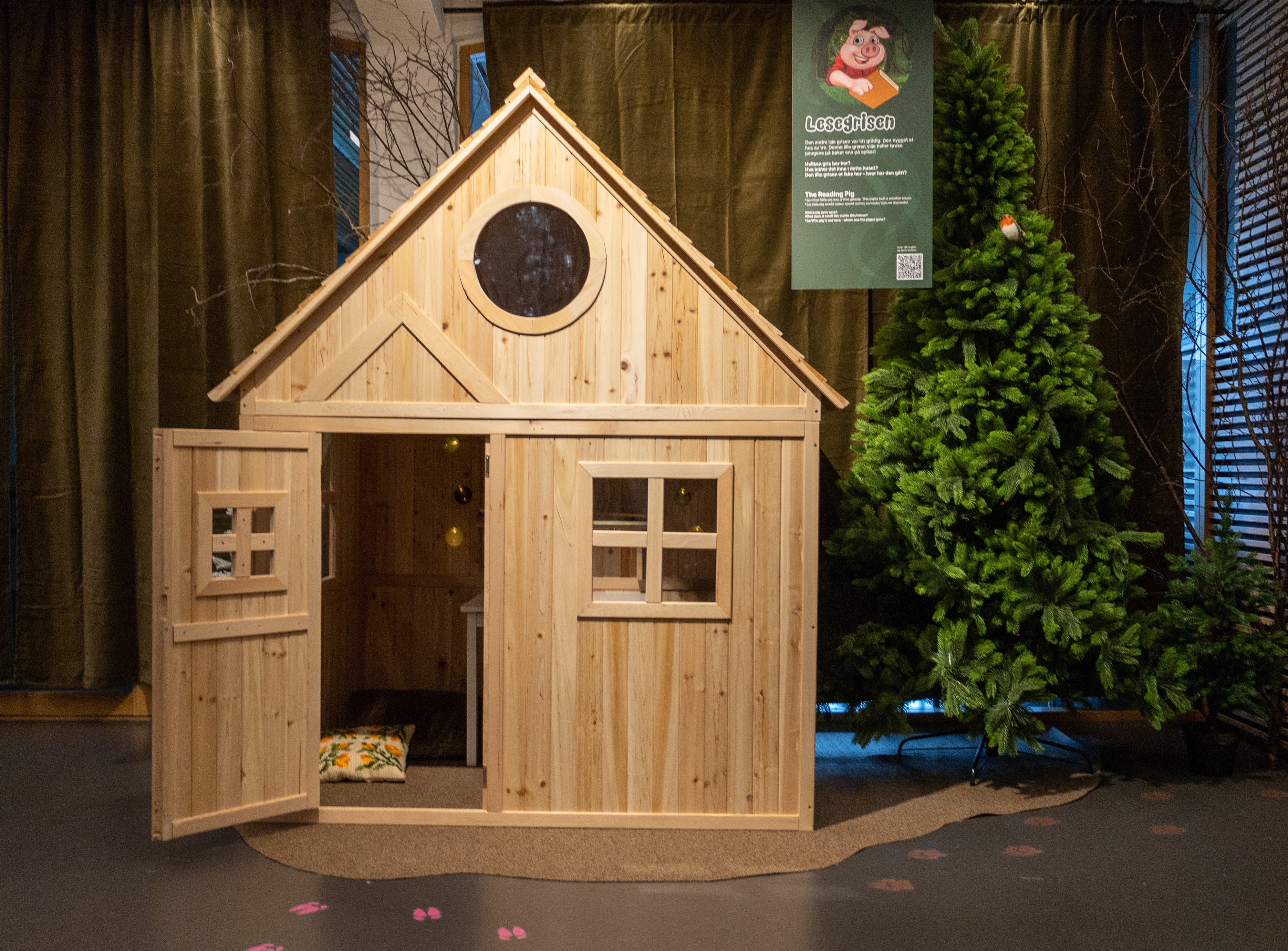
Lukt er en viktig sans som aktiverer minner og forsterker opplevelser. Til tross, blir lukt ofte oversett innen læring og i aktiviteter laget for barn. Vår utstilling er designet til å engasjere barns luktesans i deres utforskning av fortellingen om De tre små griser.
For første gang i Norge, og muligens også i verden, introduserer utstillingen barn til å oppleve ulike lukter, i spesialdesignede luktebokser, i sammenheng med en fortelling. Boksene er strategisk plassert rundt en eventyrsti som gjenspeiler fortellingen om De tre små griser. Noen bokser slipper ut konkrete lukter og noen abstrakte, noen gode og noen dårlige. Luktene er av ulik intensitet, og barna kan selv bestemme hvor lenge og hvor nære de lukter på dem ved å åpne og lukke boksene.
Utstillingen er en del av forskningsprosjektet Sensory books, som utforsker verdien av lukt i lese- og læringssammenheng. Forskningen bruker deltakende forskningstekniker som verdsetter bidraget fra alle samfunnsmedlemmer, inkludert barns perspektiv. Barn tilfører en spennende innsikt i luktens verdi, og i denne utstillingen oppfordres de til å bruke fantasien til å tolke luktene og forbindelsen til historien. Vi valgte fortellingen om De tre små griser, fordi den har en klar historie med en viktig moral: hardt arbeid og utholdenhet lønner seg til slutt.
Vi forkortet og tilpasset fortellingen med en mindre mørk slutt, og vi ga den også en moderne vri; den flinke grisen karakteriseres som lur og bruker tid på å bygge et solid familiehus, og jålegrisen er lat og bruker heller tid på å lakke negler og pynte seg. For at det skulle være flere inngangspunkter til historien, tilla vi både visuelle format og lydformat. Fortellingsteksten og QR-kodene for den innspilte dramatiserte versjonen, vises på utstillingsskiltene ved hvert av grisenes hus.
Utstillingen åpnet 14. juni og kan besøkes på Vitenfabrikken i Sandnes ut året 2022.
Den trekker på ekspertisen til flere prosjektpartnere, og deres entusiasme og kreativitet gjenspeiles i det endelige resultatet. Teamet har satt sammen en fargerik og interaktiv utstilling med grisungene sine hus i skogen. Når barna starter på eventyrstien, blir de bedt om å finne de tre små grisene og følge historien ved hjelp av et kart og grisesporene på bakken. Det finnes også et tegneområde der de kan fargelegge grisene og husene deres. Lyden av ulvens huff, puff og ulve-ul strømmer ut fra høyttalerne. Barna må gå rundt og utforske, ta på og fysisk engasjere seg i utstillingen for å få mest mulig ut av den. Selv om hovedvekten er lagt på luktesansen, engasjerer utstillingen altså alle sanser.
Gitt fleksibiliteten og flyttbarheten til lukteboksene, og et relativt beskjedent budsjett, er det planer om å holde utstillingen til andre land og steder i regionen. Man håper at barn, sammen med sine voksne, utvikler nye perspektiver på et tradisjonelt eventyr og hva det vil si å følge en historie med nesen.
Utstillingen er et samarbeid mellom Læringsmiljøsenteret, Vitenfabrikken og Sandnes bibliotek. Lukteboksene i utstillingen er produsert av Lotte Meeuwissen i samarbeid med International Flavours & Fragrances (IFF).
Tekst av Natalia Kucirkova
Om utstillingen
Ressurs til bruk i barnehagebasert kompetanseutvikling
Litteraturliste
Oversikt over publiserte artikler i forbindelse med Sensory Books prosjektet

The significance of children’s olfactory experiences in a Norwegian kindergarten: an olfactory researcher-practitioner collaboration.
Abstract: This study is a researcher-practitioner action inquiry which was used to explore children’s sensory experiences with a focus on the sense of smell (olfaction). We critically considered the early childhood theories that positioned children's sensory learning within equitable, socially just early childhood approaches and connected them to an action inquiry approach. The data comprise a systematic documentation of the odours experienced by children in the classroom, an olfactory log of the kindergarten space as well as children’s ‘smellmaps’ from outdoor ‘smellwalks’. We interpret children’s olfactory experiences and reflect on the ways in which the multi-sensory approach to literacy might extend the field’s understanding of the multi-dimensional ways in which educational researchers and practitioners can cultivate their joint inquiries in early childhood education. We present implications for adopting an olfactory researcher-practitioner collaboration in early childhood and conclude that such an approach exemplifies a sensorially sensitive early childhood curriculum.
Children’s Olfactory Picturebooks: Charting New Trends in Early Childhood Education.
Abstract:Converging global trends (digitization, globalization, datafication) have influenced all aspects of children’s literacies, including children’s picturebooks. The recent turn towards embodied, affective and sensory literacies, stimulated our interest in multisensory picturebooks that engage all children’s senses, including the sense of smell (olfaction). Olfactory children’s picturebooks demand new forms of literary conversations, which capitalise on unique properties of odours and integrate these with stories. Drawing on a systematic search of children’s picturebooks about, and with, smell, in paper-based and digital formats, we identified three principal ways in which olfaction is currently embedded in children’s picturebooks: 1, as an add-on to depiction of objects (including foods, plants) and places, 2, as a device to introduce humour into a story, and 3, as an engagement tool for children’s active participation in the story. We mobilise Sipe’s (2008) concept of seven constituting elements in children’s picturebooks to describe how current olfactory picturebooks apply the elements in their design and make recommendations for future development of children’s olfactory picturebooks. Reflecting on the generative potential of literary theories and olfactory power to stimulate children’s non-linguistic embodied interactions with picturebooks, we propose some extensions to the current olfactory picturebook landscape.
The importance of sensorial and spatial aspects in family reading at home: Insights from a national survey in Norway.
Abstract: The study investigated the relationships between spatial, multisensorial, and structural factors in family reading routines. Materials: 1001 survey responses and 926 open-ended answers of parents of 3- to 6-year-olds living in Norway, were analysed. Results: Parents who reported having a reading routine with their child valued more highly the spatial aspect of reading than parents who didn’t have established reading routines at home and fathers valued the spatial aspect more than mothers. Highly educated parents valued more the visual sensorial aspect of the reading experience and described the book’s visual appearance as salient for prompting reading conversations. The auditory aspects of reading were perceived negatively, while child’s haptic engagement was rated as motivating for children’s book interest. Conclusion: Parents have a hierarchical perception of the role of senses in children’s reading and place a high value on the place where they read with their child. These aspects need to be integrated into future SBR studies and home interventions.
Digital Edible Literacies: Ephemeral and Highly Affective.
Abstract: Digital edible literacies (DEL) are a new media phenomenon that has recently surfaced in social media but has not been examined in scholarly literature before. I exemplify the entanglements of food, media, and children's stories in three DEL exemplars shared on a private blog, Instagram, and connected Meta channels. Drawing on a genre analysis, I position DEL within affective theories and connect them to the concept of ephemeral and material affect. I argue that the ephemeral materiality of DEL expands children's literacies with new temporal relationships that exemplify the sensory dimensions of affect in literacy. This theoretical expansion is important to facilitate understandings of the complex affective qualities of new literacy ecologies.
Multisensory Reading in Early Childhood: Systematic Review with Theoretical Guidance for Human Development Studies.
Abstract: Our systematic qualitative analysis advances the field of human development with an integrative review of sensory research in children’s reading of books and e-books. Based on a systematic literature review of 35 papers, we qualitatively synthesise multi-disciplinary literature concerned with children’s sensory development and the activity of reading. We map the studies’ characteristics, including their methodological designs and primary theoretical concepts (embodiment and materiality). We highlight empirical research gaps and lack of literature attention particularly for critical engagement with sensorial research. We find notable terminological discrepancies across qualitative and quantitative studies and lack of attention to the developmental aspects of children’s sensory reading and its dynamic interaction with books’ affordances. Our theoretical contribution lies in identifying the emerging area of multisensory m(ai)cro research as a future agenda for studies of children’s reading, which we support with a terminological guide and a conceptual framework.
The explanatory power of sensory reading for early childhood research: The role of hidden senses.
Abstract: Sensory reading refers to reading that engages all six of the human senses – vison, hearing, touch, gustation, olfaction and proprioception. The author proposes that increased attention be paid to the three ‘hidden’ senses of gustation, olfaction and proprioception to advance innovative reading studies. She articulates the problematic of visually dominated multimodal research and print–digital media comparison studies, and extends the reading field to sensory reading that is not tied to a specific medium or mode of engagement but mediated by individualised sensory stimuli. This cross-disciplinary discussion of sensory reading opens up a new vista for affective literacies and integrates the tensions that emerge between psychological and new media studies concerned with material, ephemeral and embodied reading. This approach refines Rosenblatt's transaction theory and contributes new insights into materiality, ephemerality and the embodiment of reading, which dominate contemporary reading studies.
Children's stories and multisensory engagement: Insights from a cultural probes study.
Abstract: This study builds on child-centred early education models that emphasise active listening to children's voices and follow participatory research methods to accommodate children's expressions. We used the cultural probes method with eleven Norwegian 4-5-year-olds to elicit children's storytelling and multisensory engagement. The children were encouraged to tell a story using open-ended art-making materials provided in a “story box”. Children's stories were analysed according to their structural elements with The Social Relationships in Children's Stories (SRCS) tool, and in relation to the intensity of children's engagement of their six senses (vision, hearing, touch, smell, taste and proprioception) during the activity. The SRCS analysis showed that children's stories centred on real characters performing commonly encountered acts, mostly in rural settings (e.g., ‘a man pushing a tree’ or ‘A mother and a baby relaxing in the forest’). Children engaged their senses selectively, in a sequence of different levels of intensity, with the visual and haptic engagement being the most intensively engaged senses during the story-tellings. Children's real-life stories that engage the hidden senses (olfaction, taste and proprioception) could enrich the methods and design of future education studies.
BBC News Brasil - Hvorfor forskere forsvarer papirlærebøker
Experiment protocol: Exploring the sense of smell in digital book reading
Abstract: This paper outlines the background and design, and their rationale, for conducting a small-scale experiment to examine the effect of olfactory stimulation on children’s reading outcomes. The theoretical underpinnings of the study and its significance for the reading field are outlined, followed by a detailed description of the study procedure, design, measures, and instruments. Sixty-six Norwegian children will be recruited to participate in shared book reading sessions with a specially designed digital olfactory book. We test the hypothesis that olfactory-enhanced reading increases children’s engagement in the reading activity and through this engagement, will increase their vocabulary learning, story recall, and overall interest in reading and smell. The study has important implications for children’s reading, olfaction media research, and design studies.
Incorporating smell into children's museums: Insights from a case study in Norway Abstract: We report on how we integrated smell into the clas-sic children's story ‘The Three Little Pigs’ to enhance a public children's museum exhibition. The study em-ployed Wenger's (1998) social theory of learning as its conceptual framework. It aimed to enhance children's sensory experience in a local Norwegian museum through a collaboration between academia and the in-dustry. We used five abstract smells that were included in five wooden boxes and strategically placed around an adventure trail inside the museum (science factory). In this article, we ref lect on the exhibition choices and findings, and recommendations for future children's exhibitions combining odors and narrative.
Olfactoscapes in Malawi: Exploring the smells children like and are exposed to in semi-urban classrooms. Abstract: Moving beyond the “canned” lens on literacies dominant in contemporary literacy studies in Malawi, this study connects theoretical perspectives on sensory and critical literacies to original empirical data on children’s lived “olfactory literacies”. We focus on situational and locally experienced odours in two classrooms in semi-urban Malawi. We present findings from interviews and drawings with 25 children who shared their olfactory preferences with the local researcher. Children’s views were supplemented with the researcher’s and teachers’ evaluations of the olfactory qualities of their classroom environments. Our study advances the field by being the first to unite theoretical provocations on sensory literacies in global child research with critical and empirical insights into children’s local olfactoscapes.
Tracing the smells of childhoods with an olfactory research inquiry Abstract: This paper proposes a multi-method olfactory inquiry to document the rich ways in which children's sense of smell is embodied and embedded in an interplay of senses and socio-spatial relationships. I approach olfaction as a conceptual strategy and connect it to socio-material and socio-spatial theories to illustrate the ways in which close empirical attention to olfaction can provide new insights into children's sensory experiences. An olfactory research inquiry rests on traditional (e.g. SmellMaps and SmellLogs) and speculative (e.g. Ododata and Olfactoscapes) olfactory techniques that invite adults’ and children's agentic responses to odours through relational, dynamic, and non-linguistic modes. As a critical sub-methodology of sensory inquiries, olfactory inquiry can help us re-think normative, homogenizing, mind-body relations in early childhood research and practice.
Book Review: Consumable reading and children’s literature: Food, taste and material interactions Abstract: If you never heard of edible books, consumable or edible reading before, the chances are that you will devour Ilgım Veryeri Alaca’s new book “Consumable Reading and Children’s Literature, Food, taste and material interactions”. In 10 chapters, Alaca takes readers on a journey through children’s literature and literacy studies with a fresh look: the ways in which taste and consumption play a role in children’s reading. The author’s take on edible reading combines a historical perspective (children’s literature examples from the sixteenth to twenty-first century) with technological innovations in the modern human-food interaction industry. This combination, together with rich examples from her own designed prototypes of edible children’s stories, allows Alaca to make a strong case for an alternative reading future.
Fostering children’s agency in their learning futures: Exploring the synergy of generative AI and sensory learning
Abstract: The discourse surrounding the potential educational transformation brought about by generative AI has largely neglected the sensory aspect of learning. In this position paper, I emphasize the significance of sensory studies and their theoretical foundations of embodiment and multimodality as catalysts for novel perspectives on the intersection of AI and the future of education. I delve into the question of whether generative AI serves as a precursor to a new literacy or merely arises as a consequence of ongoing theoretical advancements in contemporary literacy studies. I argue that the concept of agency, which includes both personal and social aspects, should be central to recognizing the importance of sensory learning as an emerging paradigm in reimagining learning futures.
Parent–child shared reading of scratch-and-sniffbooks:the communicative affordance of olfaction Abstract: This study extends the research on shared book reading (SBR) byspecifically examining the role of smell in parent–child SBRsessions observed at home. Drawing on qualitative methods, weanalysed the verbal engagement of ten Norwegian families andtheir three tofive-year-olds reading an olfactory book (thescratch-and-sniffbookPeter Follows His Nose). We followed socio-semiotic theorisations (Kress and Van Leeuwen2002), to criticallyevaluate the role of olfaction as a communicative resource in SBR.We outline the principal ways in which smell fulfils threelinguistic metafunctions during adult–child SBR with olfactorystorybooks: the interpersonal function of signalling individualinterests, the textual function of creating a dialogic space and theideational function of revealing divergent interpretations. Wepropose that olfaction can be seen as a semiotic mode in SBR,which similarly to colour, has distinct grammar and systematiccommunication properties, with unique multimodal qualities.
Children’s early reading through the sense of smell: a typology ofolfactory engagement Abstract: We investigated adult–child shared book reading of olfactory books thatstimulate the sense of smell through scratch-and-sniffsurfaces. Weobserved ten adult–child dyads reading olfactory books at home anddocumented the characteristics and quality markers of their olfactoryengagement. Drawing on the principles of learning sciences and socio-cultural learning theories, we propose a Typology of OlfactoryEngagement that brings to the fore the potential of actively engagingthe sense of smell during shared book reading. We outline how theTypology of Olfactory Engagement can serve as a basis for futurestudies exploring adult–child interaction in home learning environments.
Children’s multisensory experiences in museums: how olfaction interacts with color Abstract: This case study was designed to engage children’s sense of smell through a story-related museum exhibition. Children’s responses to the exhibition, with particular attention to their olfactory perceptions of the odors at the exhibition, were solicited through researcher-child interviews and children’s drawings. Responses from 28 children (girls N = 14, boys N = 14) aged between 4.5–8 years were analyzed after they visited the exhibition using the cross-modal association and multisensory theories. Interview data showed that dark (brown and black) colors elicited children’s negative olfactory associations for both positive and negative odors. Children’s drawings did not seem to make references to the odors at the exhibitions but rather their preferences for the different story characters. We theorize about the associations between smell and colors in children’s responses and distil some key learnings for multisensory museology.
Aktuelt om prosjektet
Fikk pris for forskning på barns bruk av medier og teknologi
Hun er en av Norges fremste tech-kvinner og en internasjonalt anerkjent forsker innen pedagogisk teknologi, barns lesing...
Det er ingen motsetning mellom papir og digital lesing
Mens vi utforsker fremtidens læringslandskap, la oss ikke glemme verdien av å berøre, lukte, smake og lytte.
– For få norske barnebøker som viser ulike familieformer
Nå skal et nytt forskningsprosjekt undersøke om barn og unge i norske skoler og barnehager får lese bøker som handler o...
En god sofakrok kan faktisk føre til mer høytlesing
Tidligere forskning konkluderer med at lesing er viktig for barn og deres utvikling, men hva med foreldrene? Hva tenker ...
Sensory Books-prosjektsamling høsten 2022
Tverrfaglige og tverrsektorielle teammedlemmer fra hele Europa samlet seg til et prosjektmøte for å diskutere den siste ...
Lar barn få utforske luktesansen sin
Luktutstillingen på Vitenfabrikken i Sandnes, som er lagt rundt eventyret om de tre små grisene, har blitt så populær at...
Sensory Books prosjekt samling
Den 16. august holdt Sensory Books teamet sin første samling etter sommerferien. Det var en betydningsfull begivenhet si...
Når lukt spiller hovedrollen
– Vi må snakke mer om lukt, sier Natalia Kucirkova. Tirsdag 14. juni var hun med på åpningen av utstillingen "De tre små...
Prosjektmedarbeidere:
Les mer om Natalia Kucirkovas forskning
Kucirkovas forskning dreier seg om barns lesing og skriving og hvordan ny teknologi påvirker disse prosessene.
Uten en felles objektiv evaluering av hva som er «høy kvalitet» i en digital ressurs, blir markedet og barnas læring fragmentert.










